Crema de malanga is a simple, comforting soup made with malanga root, aromatics, and broth, blended until silky smooth and finished with a splash of milk. This traditional Cuban dish has a creamy texture and a subtle, earthy flavor that makes it perfect as a starter or a light meal.
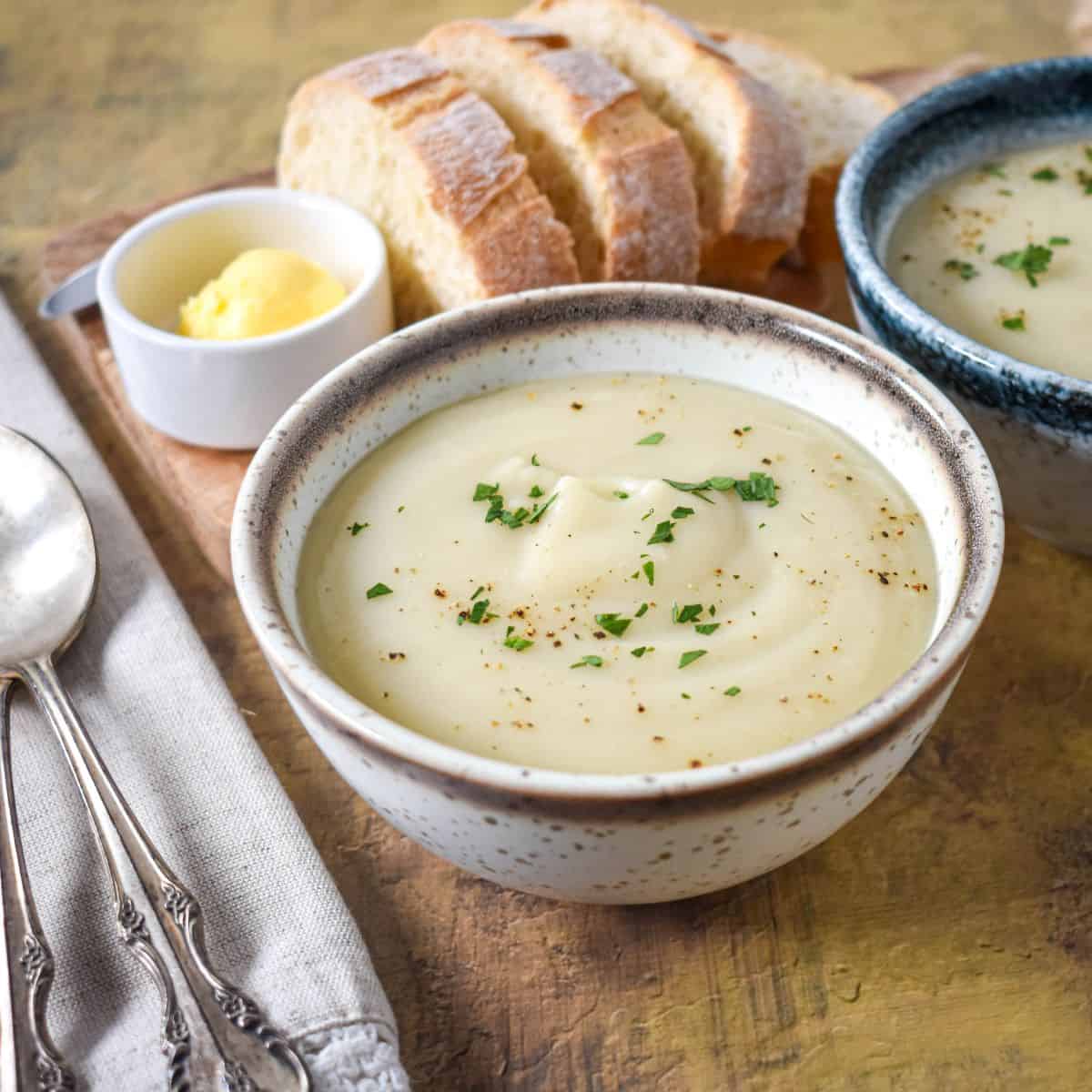
This post may contain affiliate links. As an Amazon Associate, I earn from qualifying purchases.
What’s great about this recipe
- Perfect as a starter or light meal – Serve it as a first course or enjoy a bowl with bread for a light but satisfying lunch or dinner.
- Easy to customize – Keep it classic or switch it up with different broths, extra veggies, or added spice (see variations below).
- Simple ingredients, comforting flavor – This soup is made with a handful of common ingredients and fresh malanga, but the end result is rich, creamy, and full of comforting flavor.
What you’ll need to make this soup
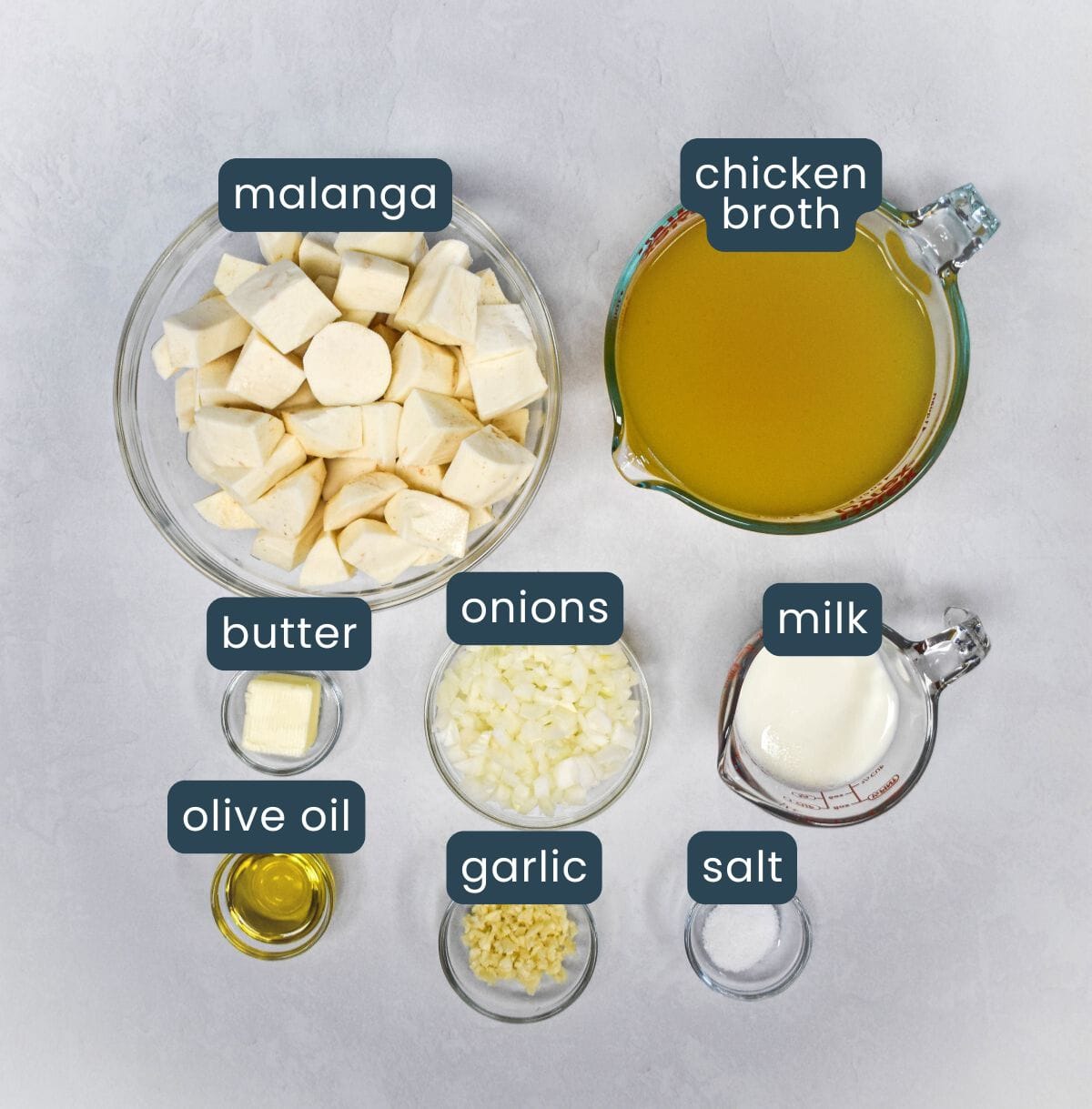
🧈 Butter and olive oil – This combo of fat and oil adds richness and is used to sauté the aromatics.
🧅 Onion – Use white or yellow onion. It adds a mild, sweet flavor that forms the base of the soup.
🧄 Garlic – Brings depth and that classic savory aroma—don’t skip it! Use more or less depending on taste.
🌱 Malanga root – The star of the soup. Malanga has a starchy texture and mild, nutty flavor when cooked.
🍗 Chicken broth – Adds body and flavor to the soup. Use your favorite store-bought or homemade broth.
🥛 Whole milk – Stirred in at the end to make the soup extra creamy.
🧂 Seasoning and garnish – Salt may be needed at the end to enhance the flavor of the soup. Black pepper and chopped parsley are optional garnishes that add a touch of color and a little kick.
📖 See the recipe card for quantities and preparation.
How to make crema de malanga
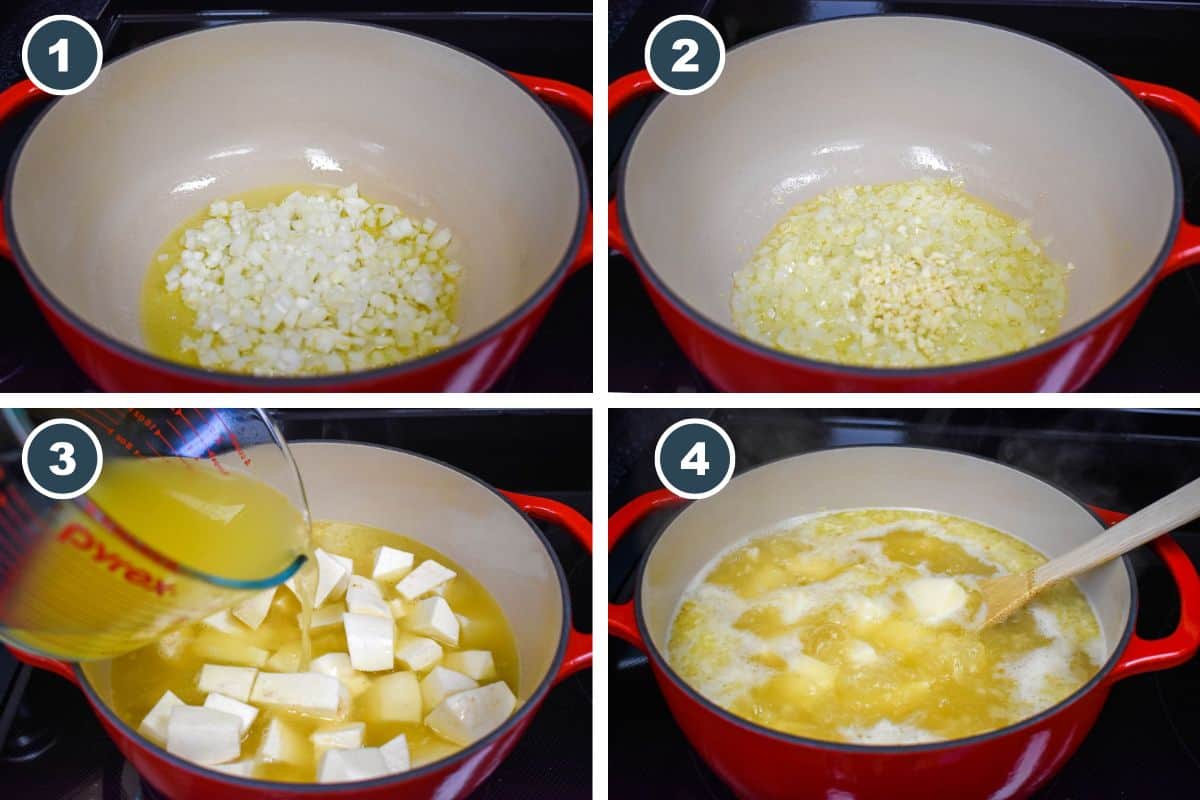
- Sauté the onions: Add the butter and olive oil to a large, heavy pot over medium heat. Once the butter is melted and foamy, add the diced onion. Cook for 2–3 minutes, stirring often.
- Add the garlic: Stir in the garlic and cook for 1 minute, stirring constantly so it doesn’t brown.
- Add malanga and broth: Add the malanga and chicken broth. Stir, raise the heat to high, and bring the liquid to a boil. Stir occasionally as it heats.
- Simmer: Lower the heat to medium-low and cover the pot. Simmer for 40–50 minutes, stirring now and then. Adjust the heat as needed to keep it gently simmering.

- Check for doneness: The malanga is ready when it’s very tender and breaks apart easily with a spoon or fork. The broth should look cloudy and slightly thickened. Remove the pot from the heat.
- Blend until smooth: Use an immersion blender to carefully blend the soup in the pot until smooth. If you don’t have one, use a countertop blender in batches (see recipe tips #1 below), or a potato masher for a chunkier texture.
- Add the milk: Still off the heat, pour in the milk and stir to combine. Return the pot to medium or medium-low heat and warm the soup through. Don’t let it boil.
- Season and serve: Taste the soup and add salt if needed. As a reference, ¼ teaspoon was enough for ours. Let it sit for a few minutes to thicken slightly. Garnish with black pepper and chopped parsley, if desired.
Recipe tips and notes
- Do not fill the blender to the top with hot liquid—process in small batches. Remove the center piece (feeder cap) of the blender lid, then place the lid on. Cover the opening with a clean, folded kitchen towel and hold it down firmly while blending. Start at a very low speed and increase gradually, if needed.
- When fully cooked, malanga becomes very soft and starchy—perfect for creating a naturally thick, smooth soup. That’s why there’s no need for a flour roux.
- Use low-sodium broth if you’re sensitive to salt. You can always add salt at the end to taste.
- If the soup seems thin at first, let it cool slightly—it thickens significantly as it sits. If it becomes too thick, add a splash of broth while stirring until it reaches your desired consistency.
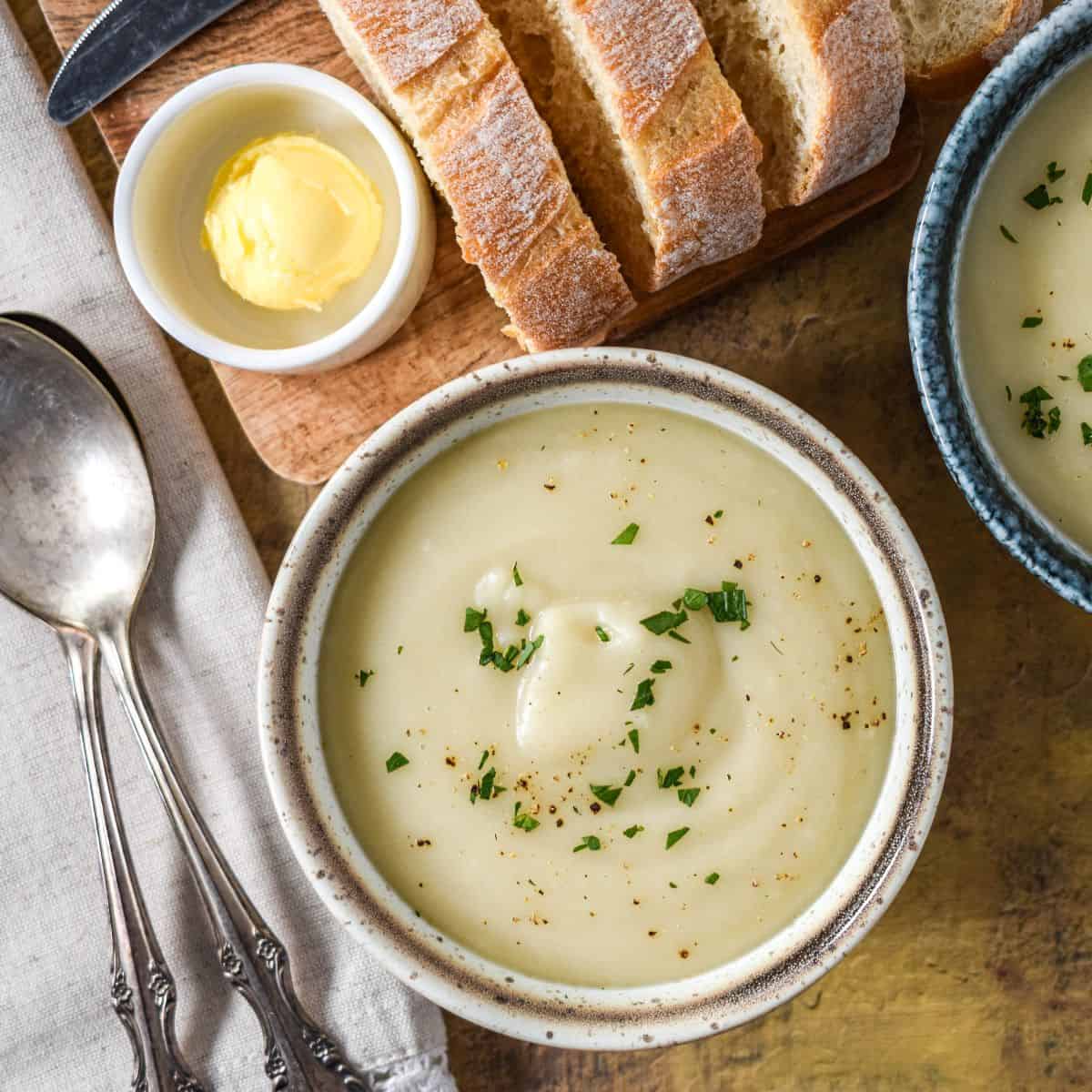
Substitutions and variations
Make it vegetarian – Use vegetable broth instead of chicken broth to keep the soup meat-free.
Change the texture – Blend completely for a silky finish, or use a potato masher to leave it a little chunky.
Switch up the flavor – For a change in color and flavor, try sautéing one diced carrot and a celery stalk with the onions. You can also add a pinch of ground cumin or a bay leaf while the soup simmers for an even earthier taste.
Dairy alternatives – Swap whole milk for a splash of half-and-half for extra richness, or leave it out altogether for a dairy-free option.
Storing and Reheating
Refrigerator: Let the soup cool, then store leftovers in an airtight container in the refrigerator for 3 to 4 days.
Freezer: Let it cool completely, portion into freezer-safe containers, and label with the contents and date. Freeze for up to 2 months. While you can freeze this soup, keep in mind that the texture may change slightly after thawing due to its natural starch content.
Reheating: Thaw overnight in the refrigerator if frozen. Reheat gently in a saucepan over medium-low heat, stirring occasionally. Add a splash of broth or water to loosen it, as the soup thickens significantly after chilling.
Food safety: Don’t leave cooked soup out for more than 2 hours—or 1 hour if the room temperature is over 90°F. Reheat leftovers to an internal temperature of at least 165°F. For more information on food storage and safety guidelines, visit the U.S. Department of Agriculture and foodsafety.gov.
Frequently asked questions
Malanga is a starchy root vegetable with rough, wiry skin and white flesh. It has a mild, nutty flavor and becomes soft and creamy when cooked. It’s often used in soups, purées, and fritters in Caribbean and Latin American cooking.
Look for malanga in the produce section of Latin American, Caribbean, or international grocery stores. Some larger supermarkets may have it near the yuca or taro root. It’s sometimes labeled as malanga blanca or cocoyam.
If available, frozen malanga can be used—though it’s not always easy to find. Make sure it’s plain (not seasoned or pre-cooked), and follow the same instructions as fresh. You may need to adjust the cooking time slightly depending on the size and thickness of the pieces.
If you enjoyed this crema de malanga, try one of our other malanga recipes like mashed malanga (puré de malanga) or crispy malanga fritters (frituras de malanga). For more Cuban comfort food, check out Cuban chicken soup (sopa de pollo) or hearty chickpea soup (sopa de garbanzos), perfect for when you're craving something warm and satisfying.
Join Us
Subscribe to our Newsletter to get the latest recipes, cooking tips, and kitchen inspiration delivered straight to your inbox. Don’t forget to follow us on social media for daily recipe ideas and more!
📖 Recipe
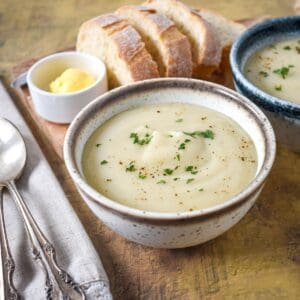
Crema de Malanga
Ingredients
- 1 tablespoon Butter
- 1 tablespoon Olive Oil
- 1 small White Onion small dice
- 3–5 Garlic Cloves minced
- 2½ pounds Malanga peeled and cut into 2-inch pieces, rinsed and drained
- 5 cups Chicken Broth
- ½ cup Whole Milk
- .25 teaspoon Salt to taste (if needed)
- Black Pepper for garnish (optional)
- Chopped Parsley for garnish (optional)
Instructions
- Add the butter and olive oil to a large pot over medium heat. When the butter is melted and foamy, add the onion. Cook for 2–3 minutes, stirring frequently.
- Add the garlic and cook for 1 minute, stirring almost constantly.
- Add the malanga and chicken broth to the pot and stir. Raise the heat to high and bring the liquid to a boil, stirring occasionally. Then lower the heat to medium-low and cover.
- Cook for 40–50 minutes, stirring occasionally. Keep the broth at a simmer and adjust the heat as needed. The malanga is done when it’s very tender and breaks apart easily with a spoon or fork. The broth should be cloudy and slightly thickened. Remove the pot from the heat.
- Off the heat, use an immersion blender to blend the soup in the pot until smooth. If you don’t have an immersion blender, use a countertop blender (see recipe tips and notes #1), or a potato masher for a chunkier texture.
- Still off the heat, add the milk and stir well to combine. Return the pot to medium or medium-low heat and warm through. Do not let it come to a boil.
- Taste and add salt if needed. As a reference, we added ¼ teaspoon to ours. Let the soup sit for a few minutes—it will thicken as it cools.
- Garnish with a small pinch of black pepper and chopped parsley, if desired, and serve warm.
Notes
- Blending hot soup - If using a countertop blender, don’t fill it to the top. Blend in small batches with the center cap removed and covered with a folded kitchen towel. Start on low speed and increase gradually, if needed.
- If the soup seems thin at first, let it cool slightly—it thickens significantly as it sits.
- If it becomes too thick, add a splash of broth while stirring until it reaches your desired consistency.
- Use low-sodium broth if you're sensitive to salt. Taste and add at the end if needed.
Nutrition
The nutritional information above is computer generated and is only an estimate. There is no guarantee that it is accurate. This data is provided as a courtesy for informational purposes only.


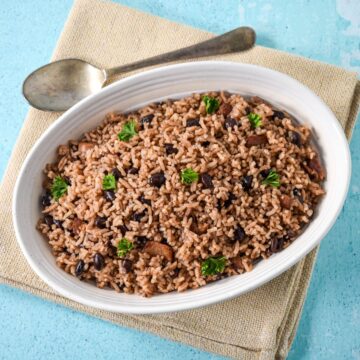

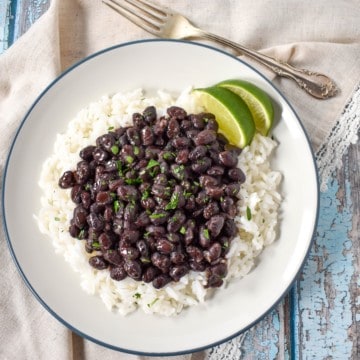

Rich
I really enjoyed this meal... Delicious! I'll definitely use this recipe in the future.
Elizabeth
Hi Rich,
Thank you. I'm glad you enjoyed it!